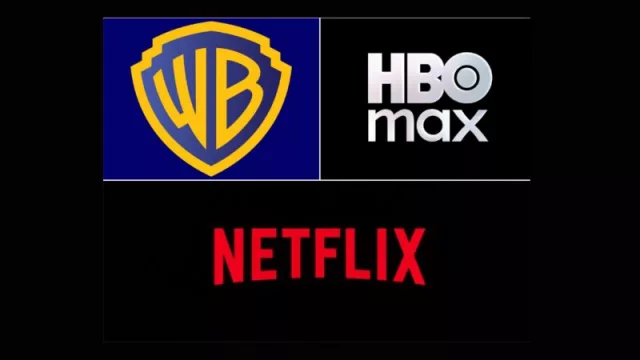Important:
You can also read this article in Portuguese in the section "Miami em Português":
https://infonegocios.miami/miami-em-portugues.
Summary and Tips
Handwriting is more than just a technical skill; it’s a form of learning and expression that has been foundational in human history. As technology advances, it's vital to strike a balance that allows new generations to reap the benefits of handwriting, ensuring a rich and complete cognitive development.
-
Handwriting is in danger of fading away among Generation Z due to excessive use of digital devices.
-
Studies indicate that up to 40% of students struggle to write legibly by hand.
-
Handwriting activates brain areas related to learning and memory.
Highlighted Tips:
-
Encourage Handwriting: Set aside specific times during the day to write by hand, like making lists or journaling.
-
Use Digital Tools Wisely: Incorporate devices like the iPad and Apple Pencil to practice handwriting in a digital format.
-
Combine Methods: Alternate between handwriting and typing to enrich the learning experience.
The Importance of Handwriting
"Since time immemorial, handwriting has been a fundamental tool in human history." This medium has not only facilitated communication but has also been essential for learning and personal expression. However, a study from the University of Stavanger in Norway reveals that “40% of students have lost the ability to write legibly by hand.” This alarming statistic highlights a cultural transformation that, although initially observed in Norway, affects youth in various parts of the world, including Turkey, where university students lack basic skills in this area. Professor Nedret Kiliceri, an education expert in Turkey, points out that "students' handwriting is often illegible," which indicates a shift in habits from an early age. “Kids have been exposed to screens and keyboards instead of pencil and paper,” leading to a decline in writing quality and an increase in difficulty forming letters correctly.
Cognitive and Educational Implications
"The impact of this loss of skills isn't limited to handwriting." Research has found that students who avoid writing by hand tend to use shorter, less complex sentences, which "affects their ability to develop complex arguments and structure coherent paragraphs." This trend reflects the prevailing communication style on social media, where brevity and speed have replaced depth and analysis.
-
Moreover, handwriting activates areas of the brain associated with visual recognition and learning, suggesting that "both forms of writing, digital and manual, play an important role in educational development." Therefore, a hybrid approach in classrooms is proposed, where digital and manual methods are alternated, emphasizing the importance of dedicating time to practicing handwriting.
Handwriting in the Digital Age: A Deep Dive
Handwriting is a skill that has accompanied humanity for millennia, but today it faces a clear risk of extinction, especially among Generation Z. This phenomenon, driven by the omnipresence of digital devices like iPads and smartphones, has sparked a series of investigations and debates regarding the educational and cognitive implications of this transformation.
The Importance of Handwriting
Handwriting is not just a means of communication; it's also fundamental in learning processes. Studies have shown that writing by hand activates different brain areas compared to typing. For example, a study from the University of Stavanger highlights that 40% of students have lost the ability to write legibly, raising serious concerns about the academic and professional futures of new generations.
-
Authors like Pamela A. Smith, in her book "Writing as a Tool for Learning: The Power of Pen and Paper," argue that handwriting improves information retention and stimulates critical thinking. Additionally, handwriting has been shown to foster creativity and personal expression—elements that can be compromised in the digital age.
-
IG: @infonegociosmiami
Technology as an Ally
While digital technologies are often seen as the primary cause of this loss of skills, "they are also emerging as potential solutions." Tools like the iPad and Apple Pencil have been promoted to revive handwriting in the digital context. “The iPadOS 18 operating system includes features that automatically correct handwriting,” making it easier for users to improve their technique with the help of artificial intelligence.
-
Since its launch in 2015, the Apple Pencil has gained notoriety for its ability to mimic the traditional writing experience, helping to foster skills like patience and concentration—qualities that are more activated when writing by hand than when typing. However, "the effectiveness of these tools remains up for debate," and their long-term impact on learning is still being studied.
The loss of the ability to write by hand among Generation Z is a concerning phenomenon that deserves attention. "It’s not just a technical skill; it’s a vital tool for cognitive and emotional development." Handwriting promotes creativity, reflection, and a personal connection with the content being created.
Consequences of Digital Replacement
Generation Z, having grown up surrounded by technology, prefers digital interactions. This shift not only affects handwriting but also how thoughts are structured. Professor Nedret Kiliceri notes that students tend to avoid long sentences in favor of short ones, a style that reflects the typical brevity of social media. This trend may limit their ability to develop complex arguments and communicate effectively.
-
Recent research highlights that the lack of practice in handwriting can lead to learning difficulties. The ability to organize thoughts and structure writing is affected, which can negatively impact academic performance.
A Hybrid Approach: Integrating Technology and Handwriting
Educators are beginning to advocate for a hybrid approach that combines handwriting with the use of digital technologies. The idea is that both forms of writing can coexist and complement each other. John Medina, author of "Brain Rules," emphasizes the importance of handwriting in cognitive development, suggesting that regular practice can improve not only memory and comprehension but also fine motor skills. Handwriting should, therefore, be an integral part of the educational curriculum.
Digital Tools: A Double-Edged Sword
At the same time, technology also offers promising solutions. Tools like the iPad and Apple Pencil have been designed to facilitate the handwriting experience in a digital environment. With features that can correct handwriting and provide instant feedback, these tools have the potential to revitalize handwriting.
-
For example, the iPadOS 18 operating system includes functions that allow users to enhance their handwriting through artificial intelligence. However, the effectiveness of these tools and their long-term impact on learning are still subjects of research.
Future Perspectives
As we move toward an increasingly digital future, it’s essential for educators, parents, and policymakers to come together to ensure that handwriting does not become an obsolete skill. This could include implementing educational programs that prioritize teaching handwriting alongside the use of technology.
Recommended Resources and Talks
"The Pen is Mightier than the Keyboard" – a talk by Pamela A. Smith available on YouTube, exploring the benefits of handwriting over typing.
"Writing: A Key to Learning" – a presentation by John Medina discussing how handwriting affects learning and cognitive development.
"Digital Tools for Handwriting" – a webinar that explores digital tools that can complement handwriting practice.
-
Subscribe for free to receive the most strategic, agile, and valuable insights at: https://infonegocios.miami/suscribite-al-newsletter
Infonegocios NETWORK: 4.5 million Anglo-Latinos united by a passion for business.
Contact Infonegocios MIAMI:
[email protected] or [email protected]












Tu opinión enriquece este artículo: